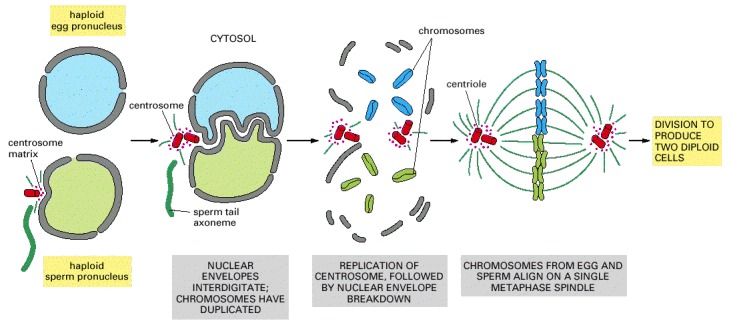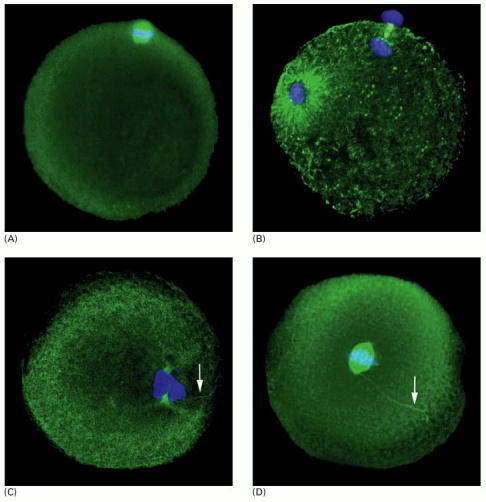It is a wonder indeed. How complex is life! 160 billiard pairs in a single molecule. It is right that they wonder what the functions of all of its parts are. Having measured its length, the really hard work now comes when trying to identify the several different parts, and assessing their possible single or multiple functions. As they have said ‘[m]any plants have big genomes and scientists want to find out why’. One can but wish them success.
The BBC reported as much in their article World record broken for living thing with most DNA.
Is it true however that “[t]he genome is the complete set of DNA instructions within a cell containing all the information needed for a living thing to develop and grow”? We do not begin life with only DNA, we begin life as a complete cell, which contains the machinery required to read the DNA*. Does that machinery not also contain information which is not necessarily, and does not need to be, carried by the DNA? We have at least two complex independent, but interdependent, structures within our cells both of which carry the necessary information to enable them to interact with each other in the processes which sustain our life. It is a wonder indeed. One could wish that a mind such as Darwin’s had been introduced to these things, what difference that would have made to On the Origin of Species? Coco leaves the answer to that to better minds than his own.
But what a wonder life is: I am fearfully and wonderfully made; marvellous are your works, and that my soul knows very well.
My frame was not hidden from you, when I was made in secret, and skilfully wrought in the womb, king David says in the 139th Psalm, I will praise you.
* Molecular Biology of the Cell. 4th edition: Fertilization
See the paragraph: The Sperm Provides a Centriole for the Zygote [redacted here]
Once fertilized, the egg is called a zygote. Fertilization is not complete, however, until the two haploid nuclei (called pronuclei) have come together and combined their chromosomes into a single diploid nucleus. In fertilized mammalian eggs, the two pronuclei do not fuse directly as they do in many other species. They approach each other but remain distinct until after the membrane of each pronucleus has broken down in preparation for the zygote’s first mitotic division (Figure 20-34).
Figure 20-34: The coming together of the sperm and egg pronuclei after mammalian fertilization.

The pronuclei migrate toward the center of the egg. When they come together, their nuclear envelopes interdigitate. The centrosome replicates, the nuclear envelopes break down, and the chromosomes of both gametes are eventually integrated into a single mitotic spindle, which mediates the first cleavage division of the zygote. (Adapted from drawings and electron micrographs provided by Daniel Szöllösi.)
In most animals, including humans, the sperm contributes than DNA to the zygote. It also donates a centriole [Short cylindrical array of microtubules, closely similar in structure to a basal body. A pair of centrioles is usually found at the center of a centrosome in animal cells.] – an organelle [Membrane-enclosed compartment in a eucaryotic cell that has a distinct structure, macromolecular composition, and function. Examples are nucleus, mitochondrion, chloroplast, Golgi apparatus.] that is lacking in unfertilized human eggs. The sperm centriole enters the egg along with the sperm nucleus and tail and a centrosome forms around it. In humans, it replicates and helps organize the assembly of the first mitotic spindle in the zygote (Figure 20-35). This explains why multipolar or extra mitotic spindles form in cases of polyspermy, where several sperm contribute their centrioles to the egg.
Figure 20-35: Immunofluorescence micrographs of human sperm and egg pronuclei coming together after in vitro fertilization.

Spindle microtubules are stained in green with anti-tubulin antibodies, and DNA is labeled in blue with a DNA stain. (A) A meiotic spindle in a mature, unfertilized oocyte. (B) This fertilized egg is extruding its second polar body and is shown about 5 hours after fusion with a sperm. The sperm head (left) has nucleated an array of microtubules. (C) The two pronuclei have come together. (D) By 16 hours after fusion with a sperm, the centrosome that entered the egg with the sperm has duplicated, and the daughter centrosomes have organized a bipolar mitotic spindle. The chromosomes of both pronuclei are aligned at the metaphase plate of the spindle. As indicated by the arrows in (C) and (D), the sperm tail is associated with one of the centrosomes. (From C. Simerly et al., Nat. Med. 1:47–53, 1995. © Macmillan Magazines Ltd.)
Fertilization marks the beginning of one of the most remarkable phenomena in all of biology—the process of embryogenesis, in which the zygote develops into a new individual. This is the subject of the next chapter.
The prior section, though not relevant to this article, is rather interesting:
The Mechanism of Sperm – Egg Fusion Is Still Unknown
containing in the light of more recent controversies in its final paragraph the ominous sentences: As the cell biology of mammalian fertilization becomes better understood and the molecules that mediate the various steps in the process are defined, new strategies for contraception become possible. One approach currently being investigated, for example, is to immunize males or females with molecules that are required for reproduction in the hope that the antibodies produced will inhibit the activities of these molecules.
Given that it was published in 2002 it can neither be accused of bias in relation to the present controversy not can it be represented as fake news.
– with apologies for the false spellings of uncertain words.